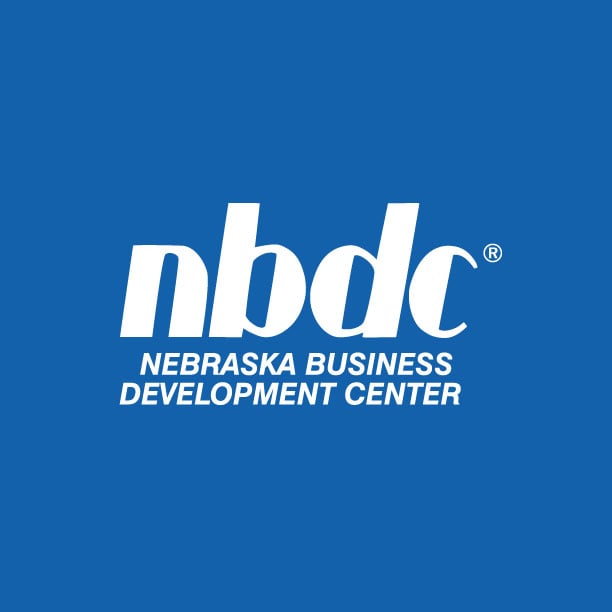Nebraska SBDC Blog
- UNO
- College of Business Administration
- Nebraska Business Development Center
- Nebraska SBDC Blog
- Additional Resources
- SBDC Blog
- Staff Directory
- NBDC News Center
Employee Training: What’s Recommended for Small Businesses?
Posted by NBDC Communications on Mar 05, 2020 04:48:31 PM

 Training your staff on essential topics helps create a safe, respectful and productive workplace. There are two types of training: recommended and required. Let’s look at some important areas of training every business owner should consider implementing.
Training your staff on essential topics helps create a safe, respectful and productive workplace. There are two types of training: recommended and required. Let’s look at some important areas of training every business owner should consider implementing.
New Employee Orientation
Training should start on an employee’s first day. Orientation helps new hires get acclimated to your business and understand your company culture. Important topics to cover include:
- Goals and expectations, including job responsibilities
- Compensation and benefits, including pay dates, payment options (e.g., direct deposit), health insurance and other benefits
- Work hours, including lunch/break times, as well as clock-in, clock-out procedures for non-exempt employees
- Code of conduct, including your company values, customer interaction, dress code and other expectations
- Technology policies and procedures, including how to access email, your social media policy and consequences for abusing company technology
- Harassment and discrimination, including the different types of harassment, specific examples of inappropriate behavior and how to report a claim
Job and Industry-Specific Training
After orientation, employees will need specific training on their roles and responsibilities. On-the-job training helps workers gain the skills and knowledge they need to succeed. Often a coworker is assigned to guide new employees through internal processes and to demonstrate how to use equipment.
Industry-specific training may also be needed. For example, if you have a medical office, you will need to train employees on maintaining patient confidentiality.
Anti-Harassment Training
As a result of several high-profile sexual harassment claims in the news, several states have begun requiring businesses to provide anti-harassment training.
- California and Connecticut require businesses with 50 or more employees to provide sexual harassment training to supervisors. In 2020, California will begin mandating that businesses with five or more employees train all workers.
- Delaware has training requirements for businesses with 50 or more employees.
- Businesses with 15 or more employees in Maine must provide training to all workers at the start of employment.
- New York recently passed anti-harassment training legislation requiring businesses to provide sexual harassment prevention training to employees.
- In other states, employers are encouraged — but not required — to provide training. These include Hawaii, Iowa, Massachusetts, Nevada, Ohio, Oklahoma, Oregon, Pennsylvania, Rhode Island, Texas, Vermont and West Virginia. Keep in mind that although training is not mandatory, foregoing it may count against you if a legal case is brought against you.
Additional states are expected to follow suit in the coming months. It’s a best practice to conduct anti-harassment training annually. And, as mentioned earlier, you want to make sure new employees are trained during orientation.
Training should cover sexual harassment prevention, as well as all other types of illegal harassment — such as race, color, national origin, religion, age, disability, genetic information and gender. Managers will require additional training, including how to respond if they receive a complaint. Check out this free on-demand webinar, Essential Strategies to Prevent Workplace Harassment, for more information about handling this pressing issue in your business.
Safety Training
OSHA’s General Duty Clause requires U.S. employers to provide a place of employment that is free from hazards — and to protect employees from on-the-job illnesses and injuries. In addition, many of OSHA’s regulations require training on certain safety measures, depending on the worker’s job.
Common training requirements include:
- Personal Protective Equipment (PPE): Employers must provide training to any employee required by OSHA regulations to wear PPE.
- Forklift Operation: Employers must ensure that each operator has successfully completed training and evaluation.
- Hazard Communication: Employers with hazardous chemicals in the workplace must train workers at the time of their initial assignment and whenever a new chemical hazard is introduced into their work area.
- First Aid: If an infirmary, clinic or hospital isn’t close to the workplace, the employer must ensure that one or more individuals are adequately trained to provide first aid.
There are many additional OSHA regulations that involve training. Many of these regulations are based on your industry. In general, high-risk occupations have more training requirements. For more information on these guidelines, read Training Requirements in OSHA Standards.
No matter what training programs you implement, you should get employee acknowledgment. Have employees sign and date a form stating they have received the necessary information and completed the training. Keep copies of the acknowledgment forms in employee personnel files.
Proper training helps ensure a safe and productive workplace. It can also help protect your business in the event of a lawsuit. Proof that employees were properly trained can aid your defense in cases alleging harassment or a workplace injury, for example. The HR 101 Courses from ComplyRight offers a free course on preventing workplace harassment to help you understand your responsibilities to prevent, recognize and resolve instances of suspected harassment at work.
Printed with permission from ASBDC. For the original article, click here.
Posts by Tag
Contact Us
- Administrative Office
- 200 Mammel Hall
- 6708 Pine Street
- Omaha NE 68182
- 402.554.NBDC (6232)
- nbdc@unomaha.edu
- Consultant Directory